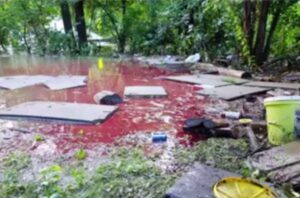Every year more than 500,000 private wells are affected by flooding. In this article, we will discuss well flooding, what to do in case of flooding, and how to ready your well for the next flood.
Which wells are susceptible to flooding?
- Water wells which are now a part of declared floodplains
- Improperly constructed wells (casing is not finished above the highest flood level recorded)
- Inadequately capped or sealed wells
- Wells with less grouting and not enough surface sealing
- Wells located in areas where flooding is common.
What to do after well flooding?

Don’t delay dealing with a flooded well water. Here is what you need to do!
Water Testing and Disinfection
- Get your water tested using a home testing kit or get it tested from a certified lab.
- Shock chlorinate your well or install a water filter based on the test quality report.

Stop Consuming Water
- Stop using water immediately after your well is flooded.
- Arrange water bottles for drinking purposes until you deal with well flooding.
- Make sure you test your well water again before you start using it.
- Stay away from a flooded well as much as possible.
Water Treatment Systems Maintenance
- Check water filters, softeners, and treatment units after flooding.
How to prepare your well for the next flood?
Preparing
- Make sure that the wellhead is cased above (4-6 inches) the highest flood level in your area. Ensure that the flood water will not seep into the top of the well through the wellhead or cap.
- Check the concrete pads around the wellhead. Make sure there are no cracks or leaks in them. It may need a re-grouting with cement or bentonite or the state-approved grouting materials.
- Arrange 5-10 gallons of water for emergency use for drinking and cooking.
Evacuation
- Turn off the water pump and check that the wires are not naked and cannot cause electrocution.
- Turn off the electricity to the septic system, water filters, and water softeners.
- Fill the pressure tank with water to avoid contamination.
- If the water well is in an open area, secure the well and components to keep them safe from rain and water.
Returning Home
- When you return home, get your well water tested from a licensed testing facility.
- Don’t consume water until you get a confirmation about its quality.
- Shock chlorinate your well if bacteria are found in the water after flooding.
Important Guide for Flooded Wells: Is Well Water Safe to Drink after a Power Outage?
Final Words
While you can’t stop floods from happening, you can mitigate the damage caused to your floods. Only a pro-active approach will help you limit the damage. Make sure you get water tested and disinfected after floods.
